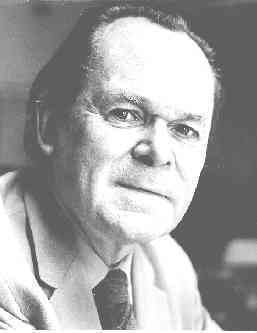Name Humphrey Searle Role Composer | ||
 | ||
Died May 12, 1982, London, United Kingdom Compositions Variations on an Elizabethan Theme, Variations on an Elizabethan Theme, Symphony no 2 - op 33: II Lento, Symphony no 2 - op 33: II Lento, Symphony no 4 - op 38: IV Allegro molto, Symphony no 4 - op 38: IV Allegro molto, Symphony no 5 - op 43, Symphony no 5 - op 43, Symphony no 4 - op 38: II Lento, Symphony no 4 - op 38: II Lento, Symphony no 3 - op 36: III Adagio, Symphony no 3 - op 36: III Adagio, Symphony no 1 - op 23: IV Allegro molto - Lento, Symphony no 1 - op 23: IV Allegro molto - Lento, Symphony no 1 - op 23: I Lento - Allegro deciso, Symphony no 1 - op 23: I Lento - Allegro deciso, Symphony no 4 - op 38: III Moderato con moto, Symphony no 4 - op 38: III Moderato con moto, Overture to a Drama - op 17, Overture to a Drama - op 17, Symphony no 4 - op 38: I Allegro risoluto, Symphony no 4 - op 38: I Allegro risoluto, Symphony no 1 - op 23: II Adagio, Symphony no 1 - op 23: II Adagio, Symphony no 3 - op 36: I Moderato, Symphony no 3 - op 36: I Moderato, Night Music - op 2, Night Music - op 2, Two Practical Cats: No 1 Macavity: The Mystery Cat, Two Practical Cats: No 1 Macavity: The Mystery Cat, Symphony no 1 - op 23: III Quasi l'istesso tempo, Symphony no 1 - op 23: III Quasi l'istesso tempo, Symphony no 2 - op 33: I Maestoso, Symphony no 2 - op 33: I Maestoso, Symphony no 3 - op 36: II Allegro molto, Symphony no 3 - op 36: II Allegro molto, Two Practical Cats: No 2 Growltiger's Last Stand, Two Practical Cats: No 2 Growltiger's Last Stand, Symphony no 2 - op 33: III Allegro molto, Symphony no 2 - op 33: III Allegro molto Similar People | ||
Labyrinth by humphrey searle complete approx 20 mins
Humphrey Searle (26 August 1915 – 12 May 1982) was an English composer.
Contents
- Labyrinth by humphrey searle complete approx 20 mins
- Humphrey searle progressions for nine instruments
- Biography
- Operas
- Ballets
- Orchestral
- Piano concertos
- Suites
- Chorus and instruments
- Voice and orchestra
- Unaccompanied chorus
- Chamber music
- Song cycle
- Songs
- Piano
- Guitar
- References
Humphrey searle progressions for nine instruments
Biography
Searle was the son of Humphrey and Charlotte Searle and, through his mother, a grandson of Sir William Schlich. He was born in Oxford where he was a classics scholar before studying—somewhat hesitantly—with John Ireland at the Royal College of Music in London, after which he went to Vienna on a six-month scholarship to become a private pupil of Anton Webern, which became decisive in his composition career.
Searle was one of the foremost pioneers of serial music in the United Kingdom, and used his role as a producer at the BBC from 1946 to 1948 to promote it. He was General Secretary of the International Society for Contemporary Music from 1947 to 1949. He accepted this post with the encouragement of the new president, Edward Clark. For Clark, he composed the Quartet for Clarinet, Bassoon, Violin and Viola, Op. 12, a musical palindrome.
Searle wrote his Piano Sonata, Op. 21 for a recital at the Wigmore Hall on 22 October 1951, given by the Australian pianist Gordon Watson to celebrate the 140th anniversary of the birth of Franz Liszt. (Watson also performed the complete Transcendental Études on that occasion.) The Sonata was loosely based on Liszt's Sonata in B minor and has been described as "probably, both the finest and most original piano work ever produced by a British composer".
Other works of note include a Poem for 22 Strings (1950), premiered at Darmstadt, a Gogol opera, The Diary of a Madman (1958, awarded the first prize at UNESCO's International Rostrum of Composers in 1960), and five symphonies (the first of which was commercially recorded by the London Philharmonic Orchestra conducted by Sir Adrian Boult).
Searle also contributed humorous compositions to some of the Hoffnung Music Festivals, including a setting of Young Lochinvar and a parody of serialism, Punkt Kontrapunkt.
Searle wrote the monographs Twentieth Century Counterpoint and The Music of Franz Liszt. He also developed the most authoritative catalogue of Liszt's works, which are frequently identified using Searle's numbering system.
Searle also composed film scores, including music for The Baby and the Battleship (1956), Beyond Mombasa (1956), Action of the Tiger (1957), The Abominable Snowman (1957), Law and Disorder (1958), Left Right and Centre (1959), October Moth (1960) and The Haunting (1963), as well the 1965 Doctor Who serial The Myth Makers. Among his notable pupils were composers Hugh Davidson, Brian Elias, Michael Finnissy, Alistair Hinton, Geoffrey King, and Graham Newcater. See: List of music students by teacher: R to S#Humphrey Searle.
He died in London in 1982, aged 66.
